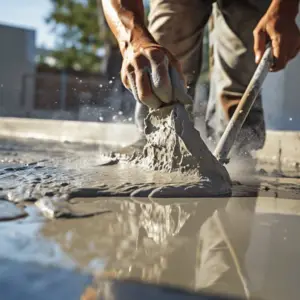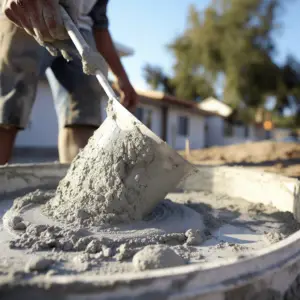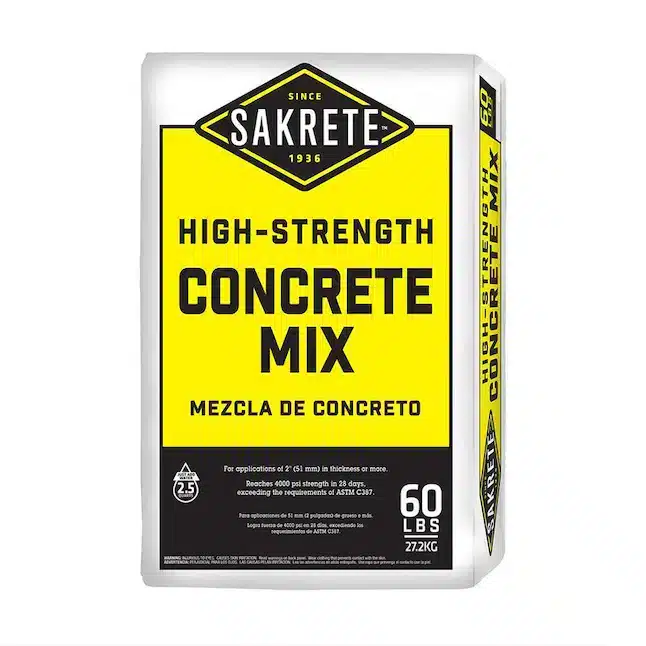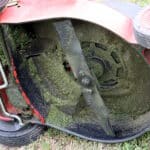Concrete is an essential composite material of sand, cement, coarse aggregates, water, and chemical admixture (optional). It plays a primary role in the structure’s durability and serviceability.
There are several options in the market, but in this piece, we’ll narrow it to two- Sakrete and Quikrete. But do you know what these products are, their uses, and their properties regarding concreting your home?
Stay on board as we help you understand them from a deeper perspective.
Table of Contents
Sakrete and Quikrete Defined

Despite being brand name products of concrete mix, they are different from each other. Sakrete is a brand-name concrete mix comprising sand, coarse aggregate, and cementitious materials.
It is popular for areas like fence posts and many flat surfaces.
Quikrete is also a name-brand concrete mix that is a mixture of Portland cement, sand, and gravel.
It is suitable to repair curbs, ramps, steps, sidewalks, and footings.
Sakrete vs Quikrete: Overview
The two products always confuse customers, with some orders only to be supplied by another. Why does this happen? Even though Sakrete and Quikrete constitute differing materials, sometimes the packaging companies for the two products use similar materials for both types.
They do so because concrete mix selling companies have no restriction to any particular ASTM standards. So, with the costs of shipping the aggregate across the country being high, the companies save money by packaging them as similar products.
That drives us to our next section.
What is the Difference Between Sakrete and Quikrete?
The two products may be similar in many ways, but they also have a few noticeable differences, such as
Workability
Sakrete tends to contain big pebbles in its mix. Thus to cover the rocks, you might have to put in sufficient cement. On the other hand, Quikrete is easy to work with and mix.
Variety
Quikrete offers a variety of mixes for various applications with different strengths like fast setting and crack resistance. It also provides compounds for special applications such as countertops and building shower pans.
That’s not to say Sakrete has no products to offer, because they do only that the other brand has more choices.
Price
Because both of these brand products come premixed and by the bag, it is a great convenience. They are high in price compared to traditional Concrete. However, Quikrete is a bit larger than Sakrete.
What Is the Setting Time and Strengths of Sakrete vs Quikrete
Sakrete
One of the commonly used premixed concrete brands is Sakrete. Like other Concrete, it only remains soft and workable for a specific time before it hardens. As you plan for your project, remember that you’ve got limited time to mix and pour the Concrete.
How Does Concrete Dry?
For a recap, Concrete is a composite mixture of sand, rock, and water. So, when you add water into the dry mix, the cement, a chemical reaction immediately begins turning into a semi-liquid sludge.
At this particular moment, the clock has tickled on the concrete drying, requiring you to do all your mixing, pouring, and shaping before it gets too dry.
Various concrete products vary in drying and curing times based on the intended use of the concrete mix. For instance, Sakrete High-Strength Mix will dry sufficiently to handle foot traffic in 24 hours and vehicle traffic in 72 hours.
In contrast, Sakrete Fast-Setting Mix takes 30 minutes to dry and is ready for foot traffic in 6 hours, while vehicle traffic in 48 hours.
Therefore, the specific concrete mix depends on the project specifications and how fast you need to complete the work.
How long does Quikrete Take to Dry?
Quikrete formulates several concrete products available in premixed bags of weights and strengths as high as 5000 psi. They also make specialized Concrete with different qualities like crack resistance and quick setting.
Aside from the three main ingredients of Concrete, you can include additional elements to enhance other features such as flexibility, more strength or declined set time.
Therefore, how long Quikrete takes to dry depends on your specific concrete mix, how thick the pour is, and the weather.
It is paramount to know how fast your concrete mix sets, dries and cures for you to be able to use the product. Ensure you check the bag’s label for further directions.
An 80-pound bag of 4000 psi (strength) Quikrete mix is dry enough to support weight in 24- 48 hours; however, this can fluctuate based on other factors, as mentioned. A completely dry cure takes 28days
Strengths
Both Quikrete and Sakrete set about the exact times. However, some of their products are set from 20 to 40 minutes, whereas others take 8 to 10 hours.
Similarly, the average strength of both products is around 4000psi (pounds per square inch). Different products also have varying strengths.
Overall, it is crucial to understand the instructions on each product by checking the package bag.
What Other Elements Affect The Drying Time Variables?

A part to the type of concrete mix, other elements that influence how long Sakrete and Quikrete take to dry are:
Temperature
The temperature factor is crucial when discussing drying and curing concrete times. The hotter it gets, the quicker the Concrete will dry and cure, and during sweltering weather, it negatively affects the final product.
A temperature less than 80 degrees F is ideal for mixing and pouring Concrete. When it is hotter, that will cause issues like water evaporating from the mixture quickly, leading to spalling and cracking on the surface.
Cold weather slows down the chemical reaction, meaning it will take longer for the Concrete to dry and fully cure.
Concrete should ideally be above 50 degrees while it dries and gets a proper cure. Failure to which you will experience weakened Concrete
Moisture
Another factor that affects the drying time and curing times is moisture. Too much moisture in the concrete mix results in water retention in the Concrete long after drying. This case leads to minor cracks due to water escape and lower compressive strength over time.
If you’re to choose between Sakrete and Quikrete, first, you need to consider your type of project and the drying time that is convenient for you. Nevertheless, both these products are more the same even though they have some differences.


